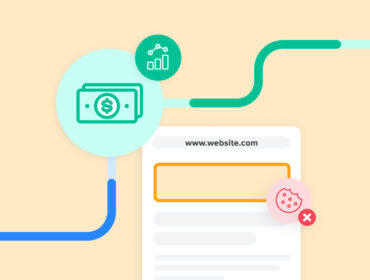Customer segmentation: What is it and can identity resolution help?
What is customer segmentation?
Customer segmentation involves organizing and dividing audiences into distinct groups based on specific characteristics so a business can target them in the right place, at the right time, and with the right message.

What are the benefits of customer segmentation?
Customer segmentation is crucial to customer-relationship management because it enables businesses to engage and communicate with their customers more effectively. It’s important to remember that each customer has unique interests, needs, and preferences. With customer segmentation, businesses can:
- Improve personalization. By grouping customers with similar interests, needs, and preferences together, businesses can deliver more value to their customers via personalized and relevant messaging.
- Enhance customer relationships. More than 70% of consumers expect brands to deliver personalized interactions. With improved relevance comes a more positive customer experience, directly impacting customer loyalty and retention.
- Eliminate waste. With the right customer segments businesses can eliminate waste by segmenting and suppressing those who’ve already purchased specific products.
- Increase revenue. Customer segmentation helps improve retention and increase revenue by cross-selling and upselling customers with retargeting campaigns based on items they’ve already purchased or actions they’ve already completed.
What are the different types of customer segments?
The segments you choose depend on many factors, like your campaign goals or industry, for example. Some common customer segmentation models include:
- Demographic segmentation: This model might include data points like age, gender, location, income, and profession as criteria for segmentation.
- Geographic segmentation: Data points used for segmenting an audience by geography might include country, state, and zip code.
- Psychographic segmentation: Less empirical than, but just as important as demographic and geographic segmentation, is psychographic segmentation. Data points used for segmenting audiences might include values and interests.
- Behavioral segmentation: Behavioral segmentation enables a business to segment its customers by using data on frequent actions, buying habits, or events (like visiting a landing page) for segmentation.
There are near-countless ways to segment your customers. Just look at The New York Times, for instance. The publisher used its first-party data to build 45 new customer segments for advertisers. The segments covered six key categories: age, business, demographics, income, and interests. To reach their goals, they even built a segment called “Subscribe to the Times” to target readers most likely to convert and sign up for memberships.
How does identity resolution help with customer segmentation?
As previously mentioned, customer segmentation organizes customers into distinct groups based on specific criteria. However, without a comprehensive and robust understanding of one’s customers, businesses might segment their customers incorrectly and miss out on revenue opportunities or deliver suboptimal customer experiences. Let’s check out some examples.
How identity resolution helps drive revenue
Prashanth is an avid cook who recently learned about a new brand, Le Chef, that specializes in kitchenware. Prashanth visits their website and browses their pizza ovens and high-end knives. Then, after browsing various items in those product categories, Prashanth decides to buy a new santoku knife. Since he’s new to the Le Chef brand, he decides to create an account, puts the knife in his cart, and completes his purchase. Le Chef now has Prashanth and his knife purchase stored in its database.
Imagine Le Chef launched a campaign targeting existing customers with promotions for a product they’ve browsed in the last month. Le Chef would then create several customer segments, including audiences who’ve browsed blenders, those who’ve looked at knives, and those who checked out pizza ovens.
Without identity resolution, Le Chef cannot reconcile Prashanth’s logged-in activity with his anonymous, non-logged-in brand interactions. Since Prashanth had not created a Le Chef account when he browsed pizza ovens, those specific brand interactions are considered anonymous. So, Le Chef would only have sufficient data on Prashanth’s online behavior to know that he’s interested in knives and wouldn’t target Prashanth with offers for pizza ovens — a product in which he expressed explicit interest. Le Chef risks leaving money on the table without a unified, single customer view.
Build better customer experiences
Identity resolution enables businesses to continually evolve and update their customer profiles as people move through their customer journey. The more data is available — and reconciled with each customer profile — the more accurate a business’s customer segments will be. This is key to building better customer experiences and driving revenue in the short and long term.


